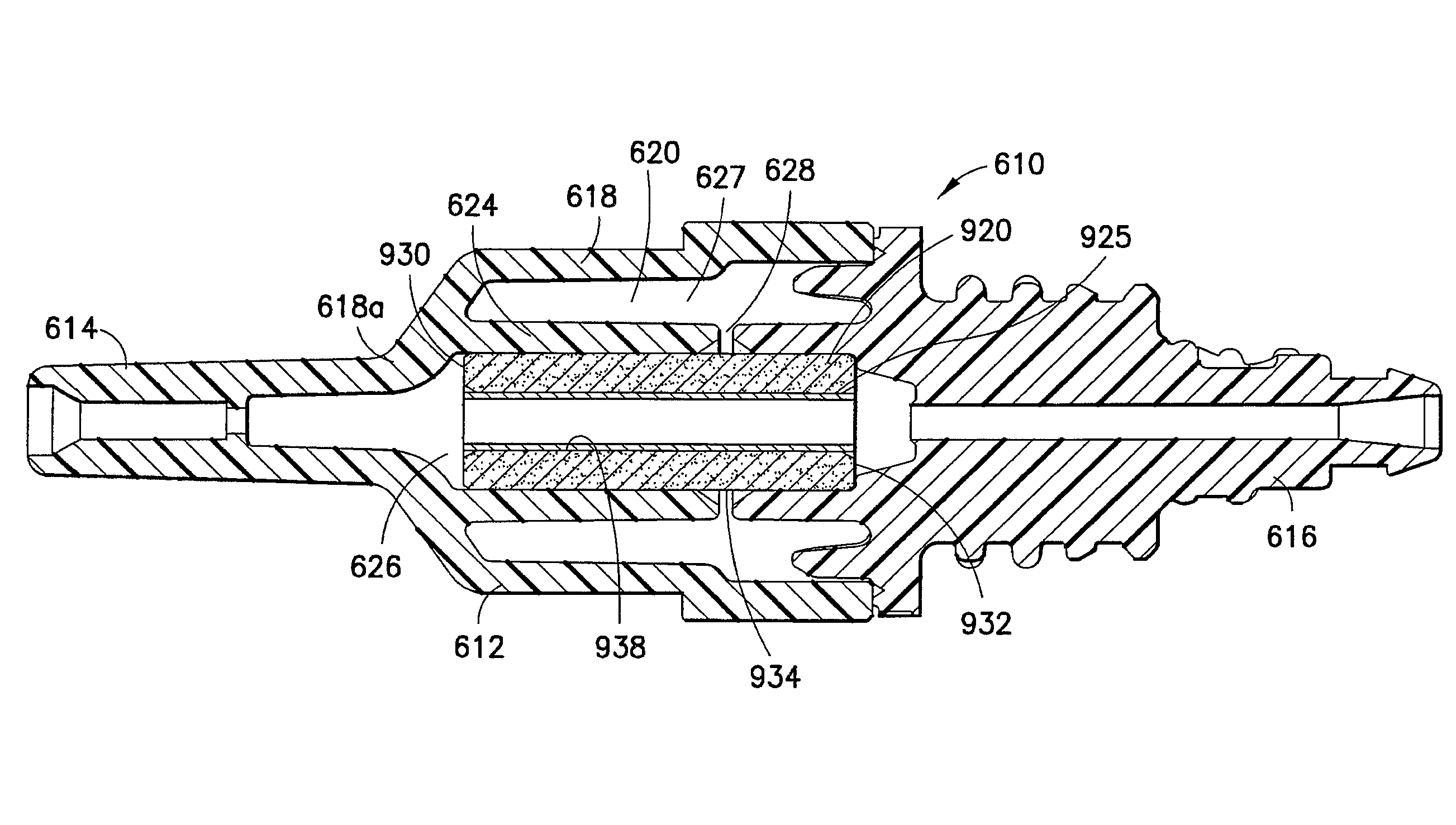Flashback blood collection needle
a blood collection needle and flashback technology, applied in the field of flashback blood collection needles, can solve the problems of adversely affecting the distension of the vein and the length of the venipuncture procedure, and the phlebotomist may erroneously believe that satisfactory vein entry has not been achieved
- Summary
- Abstract
- Description
- Claims
- Application Information
AI Technical Summary
Benefits of technology
Problems solved by technology
Method used
Image
Examples
Embodiment Construction
[0057]An embodiment of the invention provides a needle assembly for blood collection that provides a visual indication of vein entry (“flashback”) upon collection of a blood or other fluid sample from a patient into one or more evacuated blood collection tubes and inhibits leakage of the blood or fluid sample from the IV cannula on removal from the patient.
[0058]Various embodiments of the present invention are shown in the FIGS. With reference to FIGS. 1-6, this embodiment is directed to a needle assembly 210 with a housing 212 having a fluid inlet end 214, a fluid outlet end 216 and a frustum-shaped exterior wall 218 extending between the ends. Exterior wall 218 defines the housing interior 220. Housing 212 further includes a cylindrical interior wall 224 that extends in the housing interior 220 from fluid inlet end 214 substantially concentrically with cylindrical exterior wall 218 to a vent plug 900. Cylindrical interior wall 224 and vent plug 900 define a flashback chamber 226.
[...
PUM
 Login to View More
Login to View More Abstract
Description
Claims
Application Information
 Login to View More
Login to View More - R&D
- Intellectual Property
- Life Sciences
- Materials
- Tech Scout
- Unparalleled Data Quality
- Higher Quality Content
- 60% Fewer Hallucinations
Browse by: Latest US Patents, China's latest patents, Technical Efficacy Thesaurus, Application Domain, Technology Topic, Popular Technical Reports.
© 2025 PatSnap. All rights reserved.Legal|Privacy policy|Modern Slavery Act Transparency Statement|Sitemap|About US| Contact US: help@patsnap.com



